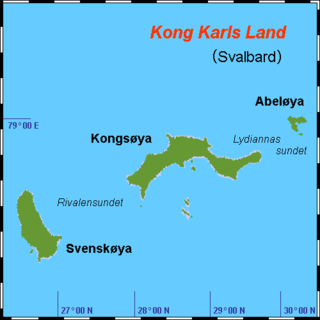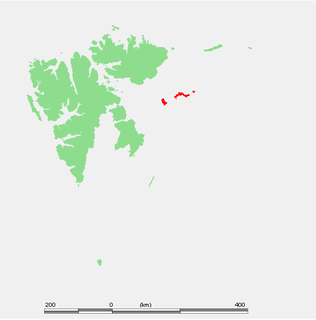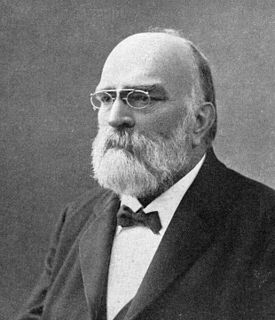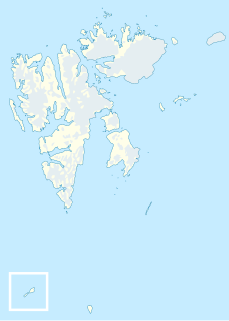 Svenskøya in the north east | |
| Geography | |
|---|---|
| Location | Arctic Ocean |
| Coordinates | 78°43′N26°38′E / 78.717°N 26.633°E Coordinates: 78°43′N26°38′E / 78.717°N 26.633°E |
| Archipelago | Svalbard |
| Area | 137 km2 (53 sq mi) |
| Highest elevation | 288 m (945 ft) |
| Highest point | Mohnhøgda |
| Administration | |
Norway | |
| Demographics | |
| Population | 0 |
Svenskøya (English: "Swedish Island") is an island in Svalbard. It is the second largest island of Kong Karls Land with an area of 137 km². [1]

English is a West Germanic language that was first spoken in early medieval England and eventually became a global lingua franca. Named after the Angles, one of the Germanic tribes that migrated to the area of Great Britain that would later take their name, England, both names ultimately deriving from the Anglia peninsula in the Baltic Sea. It is closely related to Frisian and Low Saxon, and its vocabulary has been significantly influenced by other Germanic languages, particularly Norse, and to a greater extent Latin and French.

Svalbard is a Norwegian archipelago in the Arctic Ocean. Situated north of mainland Europe, it is about midway between continental Norway and the North Pole. The islands of the group range from 74° to 81° north latitude, and from 10° to 35° east longitude. The largest island is Spitsbergen, followed by Nordaustlandet and Edgeøya. Administratively, the archipelago is not part of any Norwegian county, but forms an unincorporated area administered by a governor appointed by the Norwegian government. Since 2002, Svalbard's main settlement, Longyearbyen, has had an elected local government, somewhat similar to mainland municipalities. Other settlements include the Russian mining community of Barentsburg, the research station of Ny-Ålesund, and the mining outpost of Sveagruva. Ny-Ålesund is the northernmost settlement in the world with a permanent civilian population. Other settlements are farther north, but are populated only by rotating groups of researchers.

Kong Karls Land or King Charles Land is an island group in the Svalbard archipelago, in the Arctic Ocean. The island group covers an area of 342 km2 (132 sq mi) and is made up of the islands of Kongsøya, Svenskøya, Abel Island, Helgoland Island, and Tirpitzøya.
Svenskøya is separated from Kongsøya by the strait Rivalensundet. [2] The island is separated from Edgeøya and Barentsøya by the strait Olgastretet. [3]

Kongsøya is an island in Svalbard, Norway. It is the largest of the islands in King Charles Land. Its area is 191 square kilometres (74 sq mi). The other main island in the chain is Svenskøya.
Rivalensundet is a strait in the Svalbard archipelago, separating Kongsøya from Svenskøya both in Kong Karls Land. It has a width of about 14 nautical miles. According to historical records, the strait was discovered in 1859, and first sailed in 1889. It is named after the vessel Rivalen.

Edgeøya, occasionally anglicised as Edge Island, is a Norwegian island located in southeast of the Svalbard archipelago; with an area of 5,073 square kilometres (1,960 sq mi), it is the third largest island in this archipelago. An Arctic island, it forms part of the Søraust-Svalbard Nature Reserve, home to polar bears and reindeer. Its eastern side is covered by an ice field. The island is named after Thomas Edge, an English merchant and whaler. It is seldom visited today.


